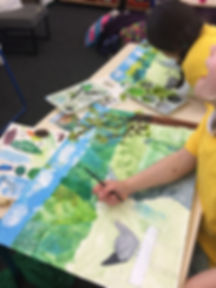Reasons Why Children Need to Paint
- My after school art club
- Feb 8, 2019
- 1 min read
Updated: Feb 10, 2019

Children learn by the process of creating artwork. For children, painting is about the process, not the final product. They enjoy painting and aren’t necessarily concerned about what it is in the end.
Painting exercises their brain. They learn how to make decisions and problem solve. Creative activities like painting, use a different part of the brain than reading and math. The right side of the brain is our creative half and responsible for visual skills. As they mix and apply paints on their paper, children learn how to make choices about their own artwork.
Painting provides opportunity for your child to experience cause and effect. While painting, your child is also experimenting and thinking like a scientist. Allow your child to mix colours together to try new combinations and explore with the paint and colour.
Painting builds self esteem and self-confidence. By providing open-ended painting activities to your child there is no right or wrong way to paint. The emphasis is on the process. Every child feels successful no matter their skill level or developmental stage. Your child will take pride and accomplishment in their painting (even if it looks like scribble scrabble to you).
Painting helps relieve stress. Painting is one way your child can de-stress and a healthy way to express their feelings.
Painting is a sensory experience.
Your child is building a knowledge base of different sensory experiences, like how it feels to touch the paper with finger painting or how it feels to move the brush with your arm across the paper. Sensory experiences are important because it helps your child explore and understand the world around them.
